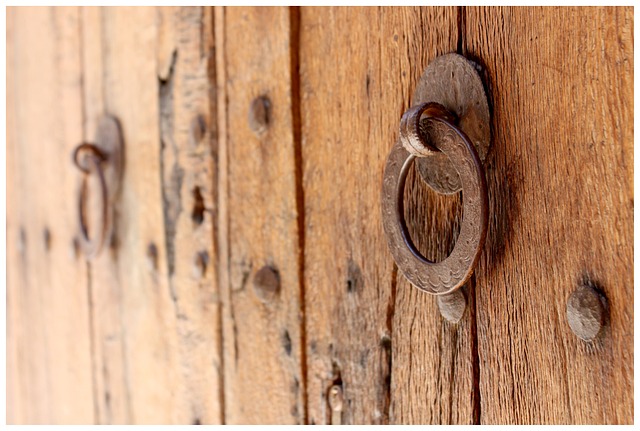Residential fire-rated doors with self-closing mechanisms are essential for life safety and property protection during fires, containing smoke and flame spread. These doors, equipped with features like spring-loaded hinges or magnetic devices, enhance evacuation time, support firefighters, ensure building code compliance, and boost homes' resilience against fire damage. Proper installation, regular maintenance, and adherence to standards from organizations like IFPA are crucial for their effective operation, providing peace of mind with an extra layer of protection for families and belongings.
Fire doors play a critical role in protecting homes and lives by containing fires and slowing their spread. Ensuring these doors close properly under emergency conditions is paramount. This article delves into self-closing mechanisms designed for residential fire-rated doors, exploring the importance of such technology, available devices, installation guidelines, benefits, and regulatory compliance standards. Understanding these aspects can significantly enhance fire safety in homes.
Understanding the Importance of Self-Closing Mechanisms in Fire Doors
Fire doors play a critical role in safeguarding lives and minimizing damage during a fire, and self-closing mechanisms are an essential component of their effectiveness. These mechanisms ensure that residential fire-rated doors close securely on their own, preventing the spread of smoke and flames, and allowing for better control of the fire’s progression. In the event of a fire, a self-closing door can buy invaluable time for occupants to evacuate safely and for firefighters to contain the blaze.
The importance of self-closing mechanisms cannot be overstated, especially in residential settings where quick evacuation is paramount. Unlike manually operated doors, which may be forgotten or left open, self-closing doors provide consistent protection. This feature is particularly valuable in high-risk areas such as kitchens and basements, where fires often start. By employing self-closing mechanisms on fire doors, homeowners can ensure a higher level of safety and compliance with building codes, ultimately contributing to the overall resilience of their homes against the destructive power of fires.
Types of Self-Closing Devices for Residential Fire-Rated Doors
Residential fire-rated doors are equipped with various self-closing mechanisms designed to ensure their safe and efficient closure during a fire event. These devices play a crucial role in maintaining the integrity of the door and preventing the spread of flames and smoke. Among the most common types are spring-loaded hinges, which use a built-in spring to automatically close the door after a certain angle is reached. This simple yet effective design ensures consistent performance without any power source or external intervention.
Another popular option is the magnetic self-closing device, utilizing powerful magnets to pull the door shut. These magnets are typically integrated into the door’s edge and the frame, providing a secure seal when engaged. Magnetic systems offer advantages such as quiet operation, low maintenance, and compatibility with various door materials. Additionally, some advanced models feature adjustable settings, allowing homeowners to tailor the closing force based on their specific needs and door weight.
How to Ensure Proper Installation and Maintenance
Proper installation and regular maintenance are paramount for self-closing mechanisms on residential fire-rated doors to function effectively during a fire event. During installation, ensure all hardware, including springs and close mechanisms, are securely fastened according to manufacturer guidelines. This involves aligning hinges correctly and tightening screws to prevent any loose components that could hinder the door’s automatic closure.
Ongoing maintenance involves periodic inspections to check for wear and tear on the closing mechanism. Lubrication of moving parts may be required to ensure smooth operation. It’s also crucial to replace any worn-out parts promptly, as they can compromise the fire door’s integrity. Regular cleaning ensures that debris or dust buildup doesn’t hinder the mechanism’s functionality, guaranteeing that residential fire-rated doors close securely when needed.
Benefits of Using Self-Closing Fire Doors in Homes
Self-closing mechanisms on fire doors offer significant advantages for home safety, especially in the event of a fire. These doors are designed to close and seal automatically when prompted by heat or smoke, providing an essential barrier against the rapid spread of flames and toxic gases. This feature is crucial for containing fires within their origin, increasing survival time for occupants and reducing damage.
In residential settings, installing self-closing fire doors can enhance overall safety without compromising aesthetics. They are aesthetically pleasing and functional, ensuring that homes meet stringent building codes while maintaining a sleek design. Unlike traditional doors that may require constant attention to close properly, residential fire-rated doors with auto-close mechanisms offer peace of mind, knowing that they will activate in an emergency, providing an extra layer of protection for families and valuable belongings.
Regulatory Standards and Compliance Guidelines
Regulatory standards and compliance guidelines play a critical role in ensuring that residential fire-rated doors function as intended during a fire event. These standards, set by governing bodies like the International Fire Protection Association (IFPA) and local building codes, dictate the minimum performance requirements for self-closing mechanisms. Compliance with these regulations is not just a legal obligation but also ensures the safety of occupants in buildings.
For residential fire-rated doors, specific attention must be given to the door’s closure system, including the mechanism, spring tension, and latching devices. Regular testing and maintenance are required to guarantee that these self-closing mechanisms operate reliably. This includes periodic inspections to verify the integrity of the door sealing, ensuring no gaps or obstructions prevent automatic closure. Adhering to these guidelines is essential for fire safety compliance and peace of mind for homeowners.
Self-closing mechanisms for fire doors are not just safety features; they’re essential components of a comprehensive home fire safety plan. By ensuring these mechanisms are properly installed and maintained, homeowners can rest assured that their residential fire-rated doors will perform optimally during an emergency. Understanding the different types of self-closing devices and adhering to regulatory standards will help create a safer living environment, safeguarding lives and property in the event of a fire.
